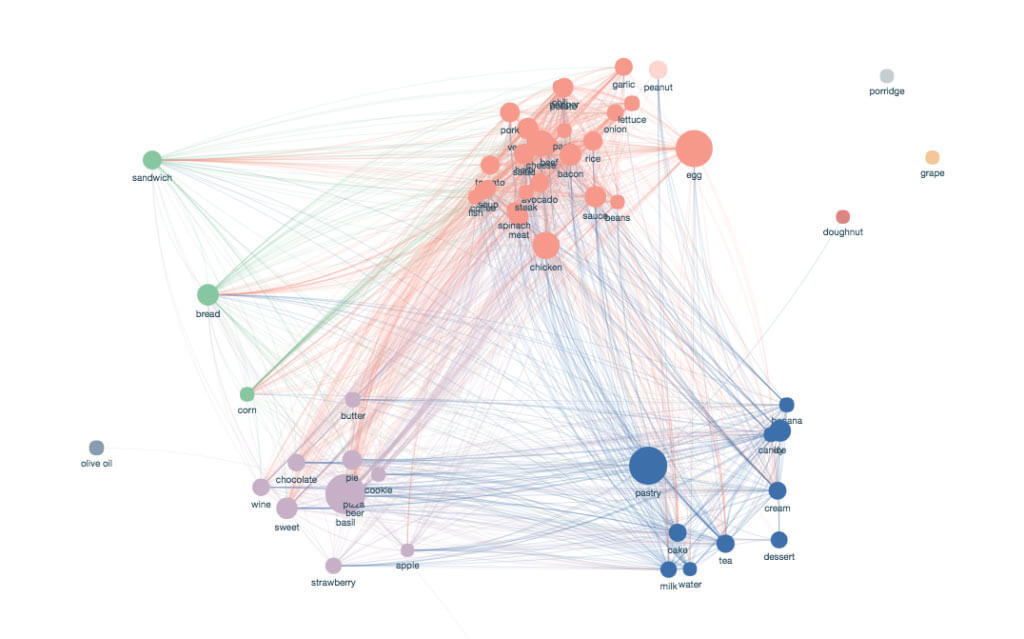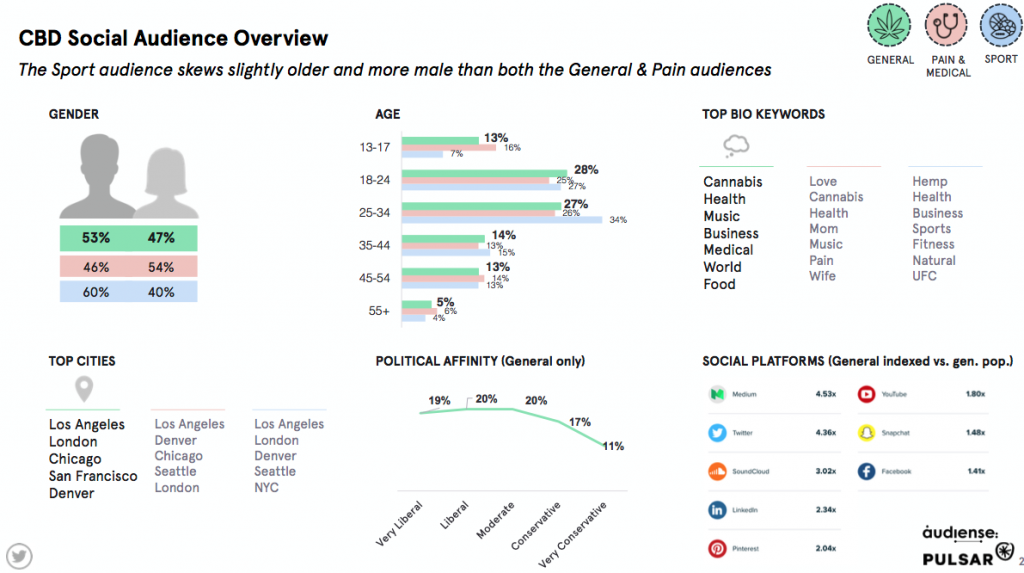What is social media research?
Top tools and techniques
Social media research is the process of analyzing social media data to conduct quantitative (and at times qualitative) research in order to understand how audiences relate to topics, by using tools and data extraction techniques. Thanks to advanced social listening and audience intelligence tools and platforms, researchers today are able to aggregate data relating to specific events, topics or within a specific audience group from social media, web, forums, news and blogs.
It’s a topic that’s constantly evolving, with researchers developing new methodologies and techniques to understand the way audiences use social media channels, their behaviors and conversations on those channels. As social media grows in both size and importance, becoming an integral part of daily life, it is a vital new area to apply research tools to begin to understand this new forum for discussion.
Social media research can take the form of social listening and audience intelligence, by observing the content and information produced online and uncovering trends and insights that emerge from this data.
Table of contents:
- What is the difference between social media research and other research?
- How can social media research help your business?
- Why do we need social media research?
- Social media research tools
What is the difference between social media research and other research?
In short, social media research is a form of research using social media, as opposed to an alternative research methodology to qualitative or quantitative research. Research agencies such as Pulsar’s in-house research teamwork with the scale of quantitative research with the depth of quantitative research.

A cluster from a research report on ingredients of Vegan dishes on social media mapped out by our AI Image recognition module.
Social media research topics allow us access to the unprompted feelings and opinions of users, something that quantitative researchers would generally have to collect through surveys or focus groups. This gives a huge scale of data available, in people’s own words, for researchers to analyze. This analysis requires expert knowledge of how people behave online but is similar in format to the research conducted by qualitative researchers of the results of a survey or focus group.
One developing area of social media research is trying to understand how machine learning and AI can speed up the collection of data. Currently, the datasets available to pull in in certain areas would take significant research resources to analyze, but by leveraging the power of machine learning and AI it is possible to train algorithms to organize data to make this analysis easier. There is significant work being done to help machines understand images, such as this collaboration between Pulsar and the Visual Social Media Lab.
How can social media research help your business?
Social media research can help your business in a number of ways: from understanding and improve the perception of your brand online; understanding the market for new products; comparing your presence to a competitor, or attracting new audiences through understanding the trends and discussions within your category.
A few areas include:
Marketing effectiveness
Truly understanding social media is a crucial part of marketing today, and it also a key resource for gaining insights for both the planning and execution of your campaigns, as millions of users, share information about their thoughts, opinions, needs, behaviors, and experiences every day. Independent, objective marketing Social media research offers an objective view of your marketing, showing where there are opportunities to increase reach and engagement. Continuous measurement through can help you to quantify your campaign performance and gain ROI.
Using social data for product development
Great campaigns are built on deep human truths. By conducting social media research you can dive into your customer’s world while developing a new product or service. Analyze behavioral signals from social media audiences to understand where your brand or product proposition fits in. And once you’ve developed a new product, you can use social media research to understand the mindsets, behaviors and affinities of your target audience to create marketing communications, visuals and experiences that click.
Attracting new customers and breaking into new demographics
You can also use social media research for audience intelligence, to understand your customers on a deeper level than just their demographics. Find out information about opinions, lifestyles, habits, and even interests to truly know what sort of people they are and be able to communicate with them in their own language. By understanding audiences, you can attract new customers who might not have even heard of your brand, or who you had never considered. Identify new opportunities within your market by keeping an eye on the conversation. Using social media research means you can continually monitor the conversation in your industry and find new ways to speak to your target audiences.
Improving customer service
Much customer service has recently moved into the public domains of social media and is a quick and easy go-to for people with questions and complaints about your brand. Understanding how people talk to and about your brand online mean you can anticipate this interaction, and even reach customers online who may have discussed your brand but were not speaking directly to you, which can go a long way in enhancing customer experience when done right.
Uncover micro-influencers that speak to your audience
Influencer marketing is a new, but already highly-saturated methodology. Attracting expensive macro-influencers for campaigns is a path well-trodden but using social media research you can uncover your brand’s biggest fans, and category-specific micro-influencers, who can advocate for your product or service. Researching and building panels of influencers mean you can build a relationship with relevant micro-influencers who are far more impactful within their community than larger influencers without as much of a niche.
Competitor intelligence and benchmarking
Monitoring the online presence of your brand is an ever-expanding task, let alone exploring activity around your competitors. Social media research can help you get a top-level view of how competitors in your industry or category approach certain topics and themes that are either pain or pride points for your brand, and find out if there is a better way to reach the audience you are trying to speak to, or how to ensure you continue to break away from the pack.
Brand reputation and crisis management
While brand monitoring is a great way to track your brand’s social media presence, in-depth social media research can help you to understand the audiences who follow and talk about your brand, and how the reputation you currently have online came about. This can be the starting point for developing a new communication strategy, or for altering your current one around the audience you have. By understanding your audiences through social media research you can also create strategies for crisis management, both for identifying a crisis brewing to act on as quickly as possible, and also preparing a response if the worst happens. Researching the impact of social media crises will help you be prepared.
Why do we need social media research?
Social media has developed at a rapid pace, and it’s important to be analysing and understanding the ways humans are using it to communicate, not only for brands to be able to speak to their customers but for understanding communication and trends of behaviour as a whole. Academic research is starting to address and use social media, but this is a field that is still developing.
Specific business use cases for social media research are developing too. Brands and agencies are recognizing that generic analysis won’t solve distinctive business problems specific to the industry. At Pulsar we’ve developed custom analytics models within the social media research team using our audience intelligence platform that spans industries including film and TV, media, education, gaming, sports, non-profit, health, fashion and more. Our industry-specific frameworks created from research for social media can deliver contextualized, action-oriented insights to strategy teams.

An extract taken from a social data research on rise of CBD
Social media research tools
Ways to conduct social media research and web data research
There are several tools you can use to conduct your own social media research, including on the platforms themselves, or you can commission a survey from an expert research team. These break down into the ways you can collect social media data and other publically available web data that is important to compare to your social media research to get a full picture of all the digital signals around your brand. Platforms like Pulsar help you collect this data in one place to get a full picture of your topic.
Collecting social media data
Twitter Analytics is incredibly helpful for research on the impact your own or brand’s Twitter channels, where you can see the best and worst posts from any month, and download data on likes, replies, retweets and so on, as well as understanding the reach and impact of your ads on Twitter. Twitter also allows you to search on a detailed level for keywords over specific time periods and in specific locations which allows you to get a feel for the sentiment around a topic.
Facebook Analytics also offers detailed downloadable statistics on your owned Pages on its analytics tab. You can see details of reach and engagements on posts and videos on Facebook Pages, as well as demographics about the people who like your page. You can also research how people engage with public Facebook Pages, but it is difficult to aggregate this because of Facebook’s privacy restrictions.
Currently, you can gain access to some tools provided by Facebook for Instagram analytics through Instagram Business Tools. The analytics offer a variety of insights on both posts on your Instagram timeline, and Instagram Stories, from viewership, reach and engagement to the days of the week your audience is most engaged and breakdown of locations by city, and age groups. It is possible to research the usage of hashtags which can be important but it is difficult to get more granular data on the images themselves without the use of a specialist tool like Pulsar, which offers vertical AI image analysis.
YouTube has a variety of metrics to study in the analytics area for creators including watch times for your videos, traffic sources to see where the viewers are finding your videos from, and Demographics reports. Other social media research available on YouTube includes looking at the YouTube Trending page and studying the view counts and comments on videos, but again this is hard to aggregate without a specialist tool. You can learn more on YouTube analytics by checking out YouTube Creators Academy.
Using web data for social media research
Forums
Finding out what people say on forums is a great way to understand social trends around specific topics. People will either discuss a specific topic in detail, or ask for advice, so if you can understand publicly posted forum topics, you will get an insight into the concerns around various topics and themes, which could support social media research. This involves manual desk research into your topic of choice, or the use of a tool like Pulsar, but can be very beneficial.
Reviews
Understanding reviews data can be incredibly helpful for new product development. Finding out how well people rate a similar product will give you indications of what people are looking for. Similarly, because reviews often involve star ratings, you can correlate this data to get numerical averages over time. Using this data alongside comments from social media research and web data means you can get a full picture of the view of a product or service.
Blogs and news
It’s also important to keep track of what is being discussed in the news and blogs, as this may impact social media research – for instance if a dramatic headline in the news changes the track of a conversation on social media, or if a blog post is generating more shares of a specific link or part of your website. This research generally has to be compiled by the user but it is possible to look at news and blogs through tools like Google News, or Pulsar.
Google’s free trends service allows you to track volumes of searches for various trends going back to 2002 and compare several trends at once as a volume over time graph. You can also see that day’s trending topics, and find associated search queries that are often searched alongside your term. This is very helpful to compare with social media research around trends, as search and social data complement each other by giving an indication of the action taken – for instance did a social spike correlate to an increase in searches for a brand, or did a new product release get discussed on social as well as increasing traffic to your website?
Google surveys are a cheap way to get data back on a specified set of questions from real people. While the data itself does not come from social media, you are free to ask whatever you choose, including about users’ social media habits, and correlating this data with social data can be essential for social media research to understand the signals from multiple channels in context.
Pulsar and other social listening and audience intelligence tools
The easiest way to see the analytics from your social channels is to aggregate them into a tool like Pulsar CORE which allows you to compare all your channels in one place without having to switch between the various analytics platforms. You can also conduct social media research by comparing the data from competitor accounts, and understanding metrics like the demographics and psychographics of your followers. Pulsar TRAC is an advanced audience intelligence tool which goes beyond social listening to aid social media research and understand it in context of human behavior. You can research keywords, audiences or content and understand how people talk about the topics you’re looking to understand on social media, news, forums, blogs, and web search, as well as the most advanced image analysis, powered by vertical AI and machine learning to segment data around topics, image contents and audiences, and present it with beautiful simple to understand data visualisation.
How to get insights from social media research
Once you have all your data, whether collected from social media analytics, or manual desk research, you can compare trends of mentions of a keyword over time, and understand this in more detail by correlating against forums, reviews and news, or analyse how certain audiences talk about your brand or product by looking at the posts themselves.
Research agencies
Many research agencies are now offering social media research alongside traditional qualitative and quantitative research. Whether it’s used for marketing effectiveness, new product development, audience discovery or brand and product strategy, social media research can deliver industry-specific insights that will help your business. Pulsar’s research team offer both continuous or one-off research programs which integrate quantitative and qualitative methodologies, to turn audience data and social media trends into strategic insights.
The importance of social media in marketing research has never been more pronounced, and the means of arriving at insight never more sophisticated.

